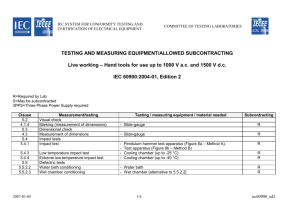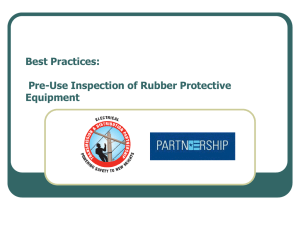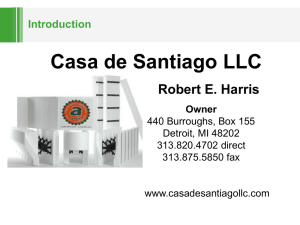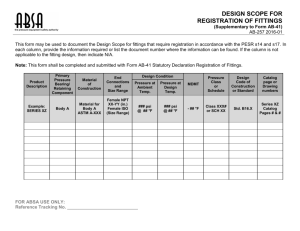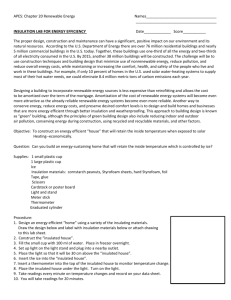1123701
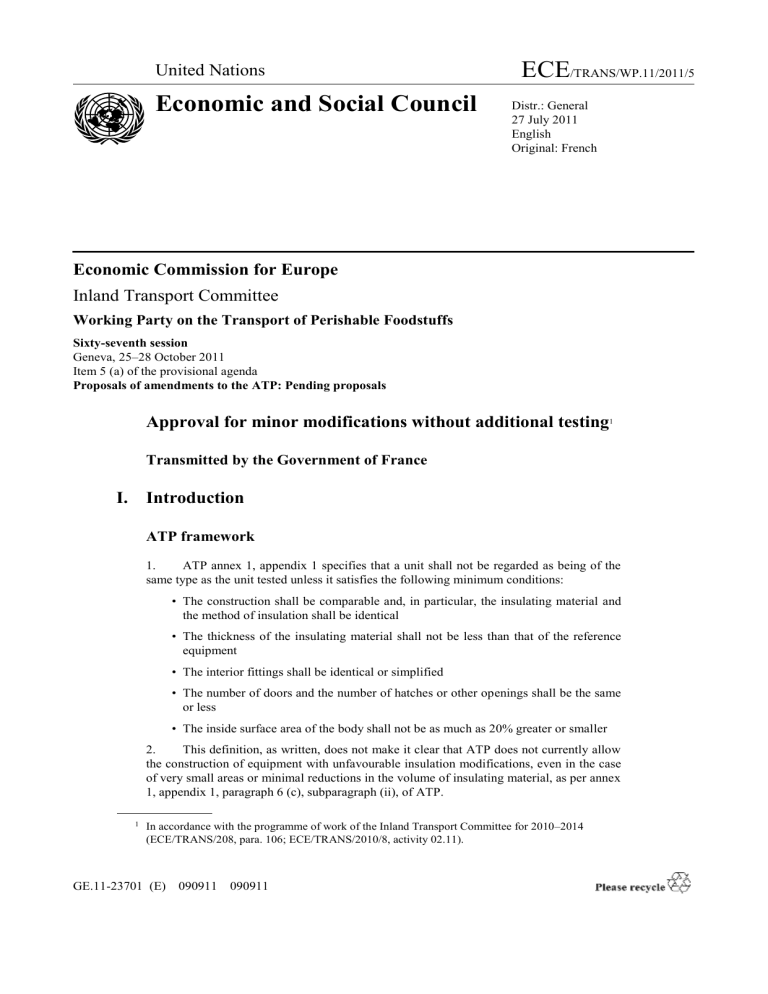
United Nations
ECE
/TRANS/WP.11/2011/5
Economic and Social Council
Distr.: General
27 July 2011
English
Original: French
Economic Commission for Europe
Inland Transport Committee
Working Party on the Transport of Perishable Foodstuffs
Sixty-seventh session
Geneva, 25–28 October 2011
Item 5 (a) of the provisional agenda
Proposals of amendments to the ATP: Pending proposals
Approval for minor modifications without additional testing
Transmitted by the Government of France
1
I. Introduction
ATP framework
1. ATP annex 1, appendix 1 specifies that a unit shall not be regarded as being of the same type as the unit tested unless it satisfies the following minimum conditions:
• The construction shall be comparable and, in particular, the insulating material and the method of insulation shall be identical
• The thickness of the insulating material shall not be less than that of the reference equipment
• The interior fittings shall be identical or simplified
• The number of doors and the number of hatches or other openings shall be the same or less
• The inside surface area of the body shall not be as much as 20% greater or smaller
2. This definition, as written, does not make it clear that ATP does not currently allow the construction of equipment with unfavourable insulation modifications, even in the case of very small areas or minimal reductions in the volume of insulating material, as per annex
1, appendix 1, paragraph 6 (c), subparagraph (ii), of ATP.
1 In accordance with the programme of work of the Inland Transport Committee for 2010–2014
(ECE/TRANS/208, para. 106; ECE/TRANS/2010/8, activity 02.11).
GE.11-23701 (E) 090911 090911
ECE/TRANS/WP.11/2011/5
Foam removal problem
3. At this stage, due to the growing needs of users and the large range of interior fittings available on the market, the insulated equipment tested and officially referenced under ATP cannot cover the large variety of interior fittings available.
4. In 2010, Germany presented an informal proposal for an amendment to ATP that would allow for the removal of small amounts of foam compared to the reference equipment so that small components could be installed. This proposal aimed at allowing a foam reduction of up to 1% of the insulating material for equipment with a reference heat transfer coefficient lower than 0.38 W/m 2 K.
5. This amendment would allow for minor modifications or additions not entailing reconsideration of the equipment’s classification. This applies to:
• The installation of recessed mountings for rails or double decks
• The addition of wheel houses
• The installation of other small components which reference units cannot take into account: additional ceiling lights, tail lift controls, light timers …
6. The number of units affected by these modifications depends on the manufacturer, its range of products and the volume of production. Internationally, it could affect as much as 5 to 10% of some manufacturers’ applications for utility and hauling vehicles and 10 to
15% of certification requests for semi-trailers.
Proposed change
7. The proposal is to introduce the following into ATP:
• The possibility of removing a small quantity of foam from that specified for the reference equipment
• The possibility of establishing equivalence between the reference equipment as described in the manufacturer’s original type approval test report and the various versions of equipment with foam removed, thus allowing for greater flexibility in unit classification
Possibility of removing less than 1% of foam
8. It is proposed to amend annex 1, appendix 1, of ATP to allow for minor and limited modifications of the interior fittings added or exchanged in units:
•
When the reference unit has a K coefficient value that is less than or equal to 0.38
W/m 2 K in the case of heavily insulated equipment, and less than or equal to 0.68
W/m 2 K for normally insulated equipment
• When the equivalent volume of accumulated insulating material of all components is less than 1/100th of the total volume of insulating material in the insulated unit
Possibility for foam removal equivalence
9. The interior fittings mentioned in a test report count as a reduction in the volume of insulating material, and the sum of these volumes may be used for any other fitting, no matter where it is situated in the unit, so long as one of the following conditions is met:
2 GE.11-23701
ECE/TRANS/WP.11/2011/5
• The thickness of the remaining insulating material is not less than that of the approved type at the same place
• The minimum thickness of the remaining insulating material is at least 20 mm
Potential impact of proposed change
10. The amendment would make it possible to harmonize practices across Europe.
Technical impact
11. The proposed rules would make it possible to ensure the isothermal qualities of manufactured units while reducing reliance on systematic type testing. This amendment will not undermine the fleet’s performance, as it includes a safety margin; foam removal is allowed only in units with K coefficients at least 0.02 W/m 2 K lower than those set out by
ATP.
Economic impact
12. This provision will reduce the number of tests for a number of manufacturers in
Europe and will thus lower their costs and the prices of their units.
II. Proposed amendment to ATP
13. Proposed amendment (version of 2 January 2011) to annex 1, appendix 1, paragraph
6 (c); of ATP:
“A unit shall not be regarded as being of the same type as the unit tested unless it satisfies the following minimum conditions:
(i) If it is insulated equipment, in which case the reference equipment may be insulated, refrigerated, mechanically refrigerated or heated equipment;
• the construction shall be comparable and, in particular, the insulating material and the method of insulation shall be identical;
• the thickness of the insulating material shall not be less than that of the reference equipment;
• the interior fittings shall be identical or simplified;
• minor and limited modifications of added or exchanged interior fittings may be permitted if the K coefficient of the tested reference equipment is less than or equal to 0.38 W/m 2 K for heavily insulated units (or less than or equal to 0.68 W/m 2 K for normally insulated units) and if the equivalent volume of accumulated insulating material of all components is less than
1/100th of the total volume of insulating material in the insulated unit;
• recessed interior fittings mentioned in a test report count as a reduction in the volume of insulating material, and the sum of these volumes may be used for any other fitting no matter where it
GE.11-23701 3
ECE/TRANS/WP.11/2011/5 is situated in the unit, as long as one of the following conditions is met:
• the thickness of the remaining insulating material is not less than that of the approved type at the same place;
• the minimum thickness of the remaining insulating material is at least 20 mm.
• the number of doors and the number of hatches or other openings shall be the same or less; and
• the inside surface area of the body shall not be as much as 20% greater or smaller.”
4 GE.11-23701
